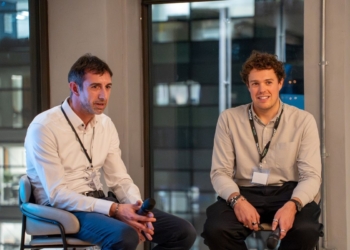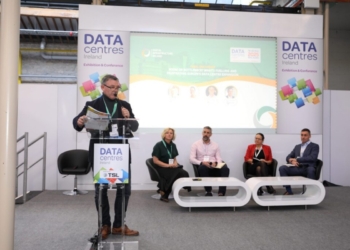Why a diverse and resilient workforce is essential for data centres of the future
Author: Beatrice


By Marc Garner, VP, Secure Power Division, Schneider Electric UK & Ireland
The data centre sector skills shortage has been well documented for almost a decade. In fact, a report published by Gartner in 2016 found 80% of firms expected to find their growth held back due to a lack of new data centre skills, with the McKinsey Global Institute predicting a global shortage of 1.5 million qualified data centre managers as early as 2015.
Data centres have become the beating heart of the global digital economy, and while the industry’s growth has fast accelerated, the question remains, have we done enough to encourage new professionals into the sector? The short answer, some may argue, is no.
Research detailed within the Uptime Institute Annual Data Centre Survey 2021 estimates that staff requirements will grow globally from about 2.0 million full-time equivalents in 2019 to nearly 2.3 million in 2025. Further, 32% of respondents reported having difficulty retaining staff, with 20% being hired by competitors. What’s more concerning, however, is that 47% of data centre businesses seem to be having difficulty just finding qualified candidates for open jobs. So, while global demands for digital transformation and mission-critical infrastructure proliferates, the skills gap affecting the sector grows ever wider. Attracting and retaining talent within the industry is now reaching a critical mass, so what can our industry do to address this?
Address the lack of diversity
One of the first areas our industry must address is around diversity and inclusion (D&I), especially in a sector dominated by male professionals. The same report from Uptime found that from a diversity perspective, intent continued to outstrip action, with just 5% of operators reporting that ‘about half’ of their data centre staff were women.
Moreover, since Uptime began tracking the sector’s diversity in 2018, the industry’s gender demographics have not changed materially, and more than three-quarters of those surveyed report that their workforce is made up of around 10% women, or less. These figures present a stark look for our industry, especially one that is fuelled by investments, mergers and acquisitions (M&A), and growth.
As an industry, we must drive the development of a broader talent pool, and engage, empower, and encourage more female candidates to join and futureproof the sector. This, however, is one area where Schneider Electric is leading by example, and through our commitments to sustainability and diversity, we are creating an inclusive environment for the next generation of female professionals. Our goal is to ensure that women represent 50% of all new hires, 40% of all frontline managers, and 30% of senior leadership roles in our organisation by 2025.
Become greater advocates for STEM
Another key means to address the shortage is to encourage young professionals to consider careers in science, technology, engineering, and mathematics (STEM). Here driving awareness among the next generation from a young age is critical, primarily so that they understand the importance of the sector and consider it as a valuable career path.
STEM, however, is not just limited to maths and engineering, and key examples of business roles that can draw on its skills include product development and marketing; solutions design and architects; strategic planning and project management; mechanical and electrical engineering (M&E); and business development and entrepreneurship. Furthermore, promoting STEM education from an early age has been found to create a diverse pool of talent across all levels, which is likely to help attract more professionals into the industry and foster the growth of its future leaders.
Reassess the skills required to enter the sector and retain the workforce
Today, there are many expert individuals who possess skills that can be cross trained into the industry. At Schneider Electric, we believe we must reassess the criterion for entering the sector and consider candidates who have built core competencies which can translate into quick learning. By widening the recruitment net through cross-skilling and looking outside of the sector, we can identify candidates who have comparable expertise and bridge the skills gap.
Staff retention is reported by Uptime to be another key challenge, and one that should be a key focus for our industry. Mentorship and development from within remain essential, and we believe it is essential to recognise both the value and the potential in our people. During the pandemic, for example, our sector’s professionals were named key workers, and data centres became instrumental to every facet of the digital economy. With more skilled professionals leaving our sector to join other industries, there has never been a more important time for us to focus on mentorship and to create opportunities for development, which will be vital to retain staff within the sector.








